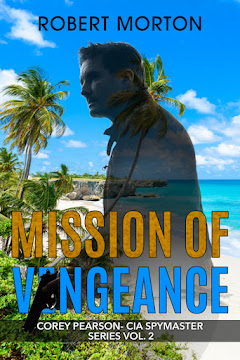The Rand Corporation finalized a report that judges the efficacy of the U.S. Intelligence
| Order online |
The report research was completed by the Intelligence Policy Center (IPC) of the RAND National Security Research Division (NSRD). Some of the suggestions are already in place, haven been initiated in the wake of the December 2004 intelligence reform legislation, such as creating a Deputy Director of National Intelligence position, establishing a National Intelligence University, building a Long Term Analysis Unit at the National Intelligence Council, and forming an Open Source Center.
Much of these reco's are being accomplished as we speak. The NSRD has earned respect and conducts research and analysis for the Office of the Secretary of Defense, the Joint Staff, the Unified Commands, the defense agencies, the Department of the Navy, the Marine Corps, the U.S. Coast Guard, allied foreign governments, as well as the IC. Below are the critical transformations needed that the RAND Corp. recommends, plus several of our own ideas:
1. Create a Deputy Director of National Intelligence for Analysis as a focal point for analysis.
2. Establish a National Intelligence University to perfect training skills for analysis and continuous, life-long learning in the art of intelligence tradecraft tools and knowledge acquisition.
3. Build a Long Term Analysis Unit at the National Intelligence Council (NIC). The NIC conducts strategic thinking and reports to the Director of National Intelligence about real-time and potential foreign policy issues. The NIC’s intel is reviewed and matched throughout the IC before being forwarded to them.
4. Create an Open Source Center to make more creative use of open-source materials.
5. An attitudinal change is needed so the entire IC leadership embraces the concepts of intelligence analysis in particular, as well as data-sharing, fusion, and the like.
6. Make a clear distinction between three levels of analysis: technical processing, single source, and all sources analysis.
7. The authors criticize the IC’s focus on a `generalist' analysts rather than analysts with specific subject expertise. True, generalists can be moved about as needed from crises to crises as required, but they say this is a repeated folly and bring up the NCTC’s failure to "connect the dots" in the most recent terrorist incident (the Christmas Day underpants bomber).
8. End the IC’s discounting of OSINT. They believe the CIA’s Open Source Center (OSC) is a parody and the disregard of the potential value of OSINT has undermined U.S. intelligence operations.
9. Please read CIA should conduct counterintelligence inside America"
10. Please read CIA and Defense Intel Agency need Cyber Counterintelligence Group (CCG)"
11. OSINT should be expanded exponentially for use by the entire IC. This is currently being done with Cloud and data mining technologies. To gain some ideas, read how we at Osint News use OSINT to gather information: THE HOW? WHERE? FROM WHO? OSINT NEWS GATHERS ARTICLE INFORMATION.
Robert Morton, M.Ed., Ed.S. is a member of the Association Of Former Intelligence Officers (AFIO) and writes the online spy series Corey Pearson- CIA Spymaster in the Caribbean. The views expressed are his own and do not represent those of any organization he is a member of. Contact him on the Secure Contact Form





No comments:
Post a Comment